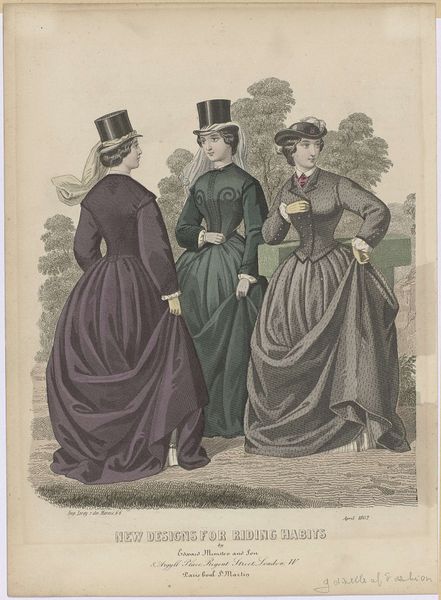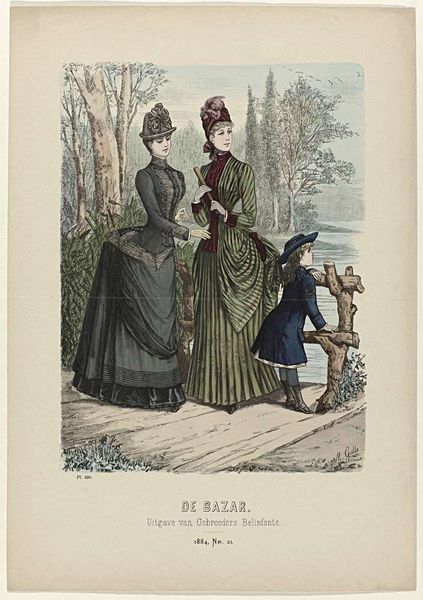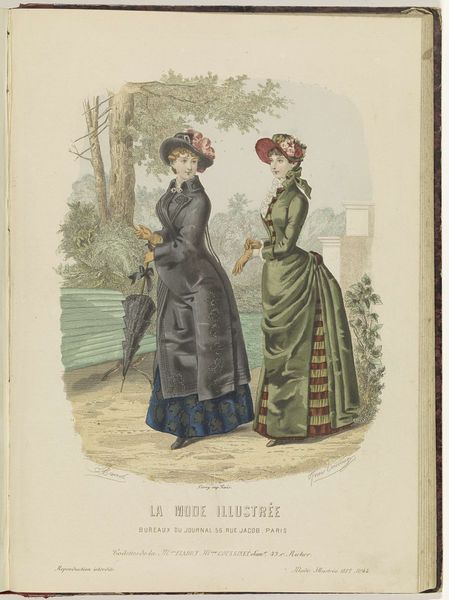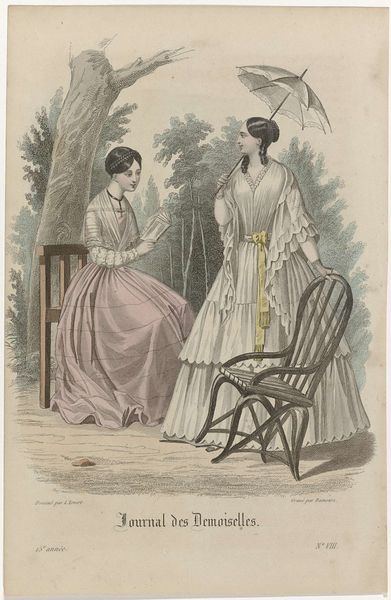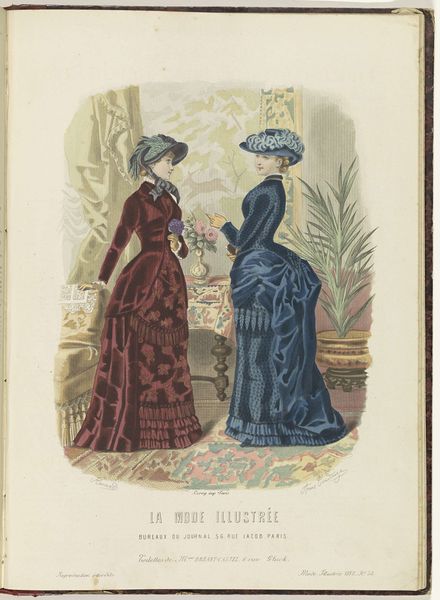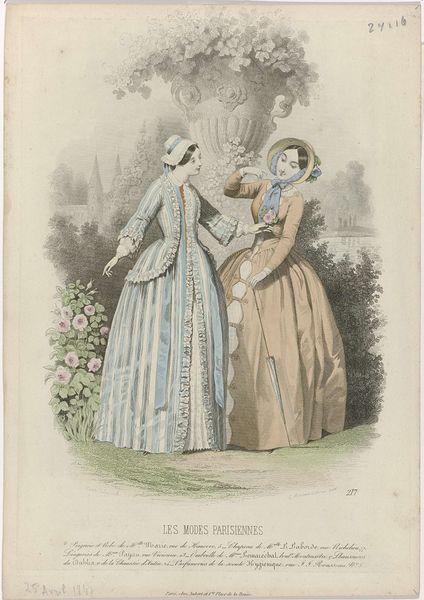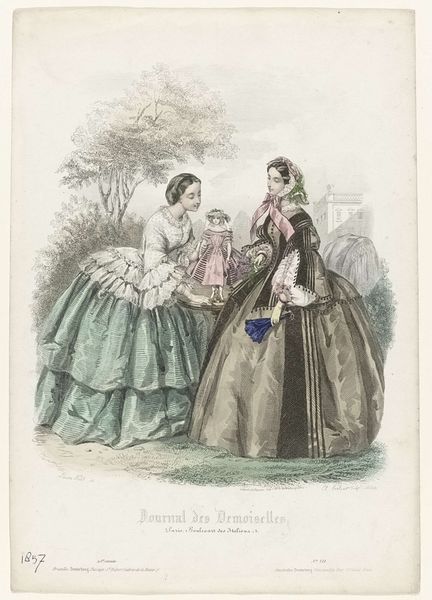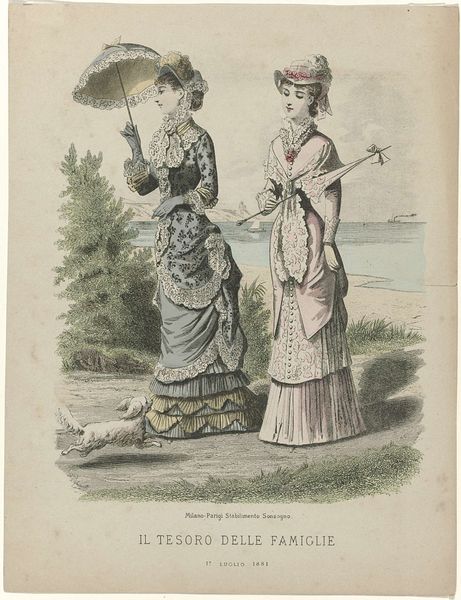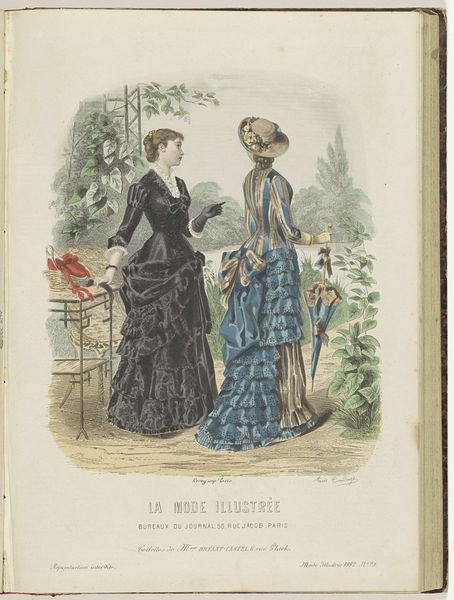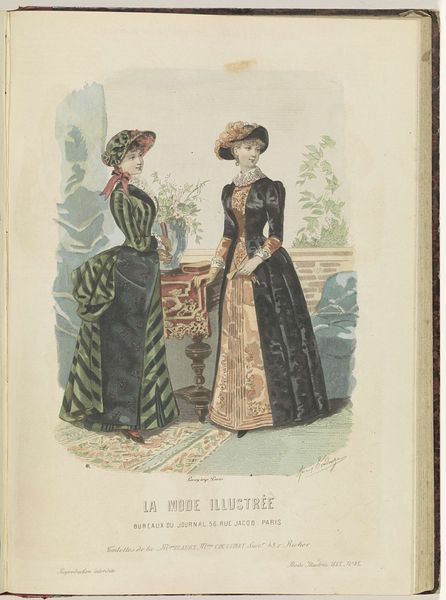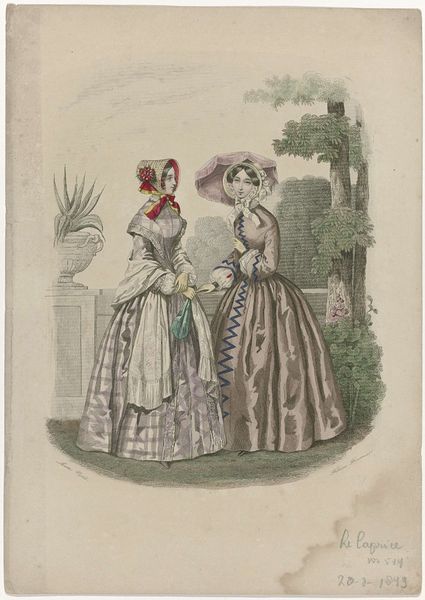
Dimensions: height 382 mm, width 270 mm
Copyright: Rijks Museum: Open Domain
Editor: Here we have "De Bazar, 1887, Nr. 8, Pl. 679", a watercolor print by an anonymous artist. It depicts two women in elaborate dresses; the details are incredible. What stands out to you most about this piece? Curator: I'm immediately drawn to how this image functions within a broader historical and social context. Consider the fashion plate itself. It served not only to illustrate current styles, but also to reinforce the era's restrictive social structures, particularly concerning women’s roles. Editor: Restrictive? I hadn't considered that. Curator: Absolutely. These elaborate dresses, beautiful as they are, were incredibly limiting. They physically confined women, mirroring their limited access to public life and economic independence. Notice how the environment seems almost secondary to the clothing. Editor: Yes, the women almost seem divorced from their surroundings, now that you mention it. Curator: Precisely! It underscores how a woman's primary identity was often tied to her appearance and social presentation, effectively objectifying her. We can also consider the print's implicit audience – upper-middle-class women who had the leisure time and financial means to engage with fashion. It highlights societal divisions, doesn't it? How do you see class playing out here? Editor: I suppose it emphasizes the separation between the elite and those who could never afford such garments, accentuating their restricted access to social mobility. I'd never considered fashion as a statement of social and economic division. Curator: It’s a potent reminder that even seemingly innocuous images are often deeply embedded in complex power dynamics. Editor: I see the image in a completely different light now! It's fascinating to consider how art and fashion can reflect and reinforce societal norms. Thanks for sharing this perspective!
Comments
No comments
Be the first to comment and join the conversation on the ultimate creative platform.
